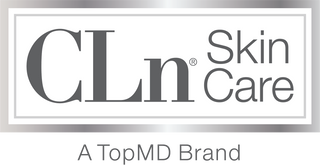
Dermaplaning has become a popular skincare treatment for its ability to exfoliate the skin and remove unwanted facial hair. This procedure involves using a scalpel to gently scrape away dead skin cells and peach fuzz from the surface of the skin, leaving a smooth and radiant complexion.
However, it is important to take the necessary steps to prepare your skin before and after dermaplaning to avoid any potential irritation or razor bumps.
If you're thinking about trying dermaplaning, or if you just want to know more about what to expect from it, this article is for you! We've put together some tips on how to prepare your skin before dermaplaning—and how not to ruin your results with an unexpected rash or razor bump.
How to Avoid Dermaplaning Rash or Razor Bumps
If you're thinking about dermaplaning, you're probably wondering if it's safe. You've heard of the benefits—like clearing up acne and getting rid of peach fuzz—but maybe you're worried that it might leave your skin red and irritated.
Luckily, there are several things you can do to avoid a rash or razor bumps after dermaplaning. Let's take a look at some of them!
- Prepare your skin: The best way to avoid dermaplaning rash or razor bumps is to be prepared. When your skin is prepared for the treatment, you'll have less of a chance of developing razor bumps or irritation.
- Use a clean and sharp blade: Make sure that your skin clinic or treatment provider is using a clean and sharp blade during the procedure. Using a dull or dirty blade can increase the risk of infection and irritation.
- Gently wash your face with mild cleansers, and avoid rough exfoliating cloths: When it comes to avoiding dermaplaning rash or razor bumps, the type of facial cleanser you use and the way you wash your face can make a big difference. Choosing a gentle facial cleanser and using your clean hands to wash off the cleanser can help prevent irritation and inflammation of the skin, which can lead to post-dermaplaning rash or razor bumps.
CLn Facial Cleanser is specially formulated so that it won't irritate sensitive and delicate facial skin. Unlike many “gentle” face washes, it effectively cleanses skin without stripping away moisture, leaving your face feeling clean, refreshed and soothed.
Preparing Your Skin before Dermaplaning
When you dermaplane, you are getting rid of the dead skin cells on your face in order to reveal younger-looking skin. This process can be beneficial for those who have issues with their skin's surface.
However, before you start planking your way through life, there are some things you should know about preparing your face for this procedure. Preparing your skin before dermaplaning is key to making sure you get the cleanest, most beautiful look possible.
Here are some tips to prepare your skin:
- Avoid using exfoliants: It is important to avoid using any harsh scrubs or exfoliants at least one week before your scheduled dermaplaning appointment. These products can make your skin more sensitive and increase the risk of irritation during the procedure.
- Stay out of the sun: Try to avoid direct sunlight for a few days leading up to your dermaplaning appointment. Sun exposure can cause skin damage and increase the risk of complications during the procedure.
- Use a gentle cleanser: Use a gentle, non-abrasive cleanser like CLn Facial Cleanser to wash your face before your appointment. Avoid any products with alcohol or fragrances as they can irritate the skin.
Caring for Your Skin after Dermaplaning
After a dermaplaning session, your skin will look amazingly fresh and clean. But it's important to follow up with proper skin care to keep your skin looking its best.
Below are the top tips for post-dermaplaning skin care:
- Keep your skin clean: Avoid touching your face for at least 24 hours after the procedure to prevent bacteria from getting into your pores. Also, avoid applying makeup or any other products to your face for at least 24 hours.
- Use a gentle moisturizer: Use a gentle moisturizer to soothe and hydrate your skin after dermaplaning. Avoid any products that contain alcohol or fragrances as they can cause irritation.
- Protect your skin from the sun: Apply sunscreen with at least SPF 30 daily to protect your skin from the sun's harmful rays. Sun exposure can cause hyperpigmentation and increase the risk of complications after dermaplaning.
Dermaplaning is a safe and effective way to exfoliate the skin and remove unwanted facial hair. However, it is important to take the necessary steps to prepare your skin before and after the procedure to avoid any potential complications. By following these tips, you can ensure that your skin looks and feels smooth, radiant, and healthy after dermaplaning. ###
